“How’s your health?”
When most people hear that question, they immediately think about their blood work or maybe a nagging problem, like back pain or heartburn or migraines.
Others might focus on a fitness achievement:
“Just completed my third marathon this year. Never been healthier!”
Many people simply consider their weight or overall appearance:
[pinches stomach] “I’m still using the same belt hole I used in my twenties, so I must be healthy, right?”
What do these have in common?
They’re centered around a person’s physical health.
Which makes sense: It’s how we’ve been taught to think about our health since we were old enough to… think about our health.
But…
It doesn’t give you the full picture.
Not even close.
Good health is about way more than your LDL cholesterol, body composition, and fitness level.
Research shows it’s also about your mental and emotional well-being, feeling connected to others, and just enjoying life overall.1,2
And that’s just for starters.
That’s why we created a novel health assessment to help you gauge how you’re really doing.
To do this, it analyzes your health in six crucial dimensions—instead of just one.
But besides helping you better understand the state of your health, it also shows where you can make the biggest positive impact on your health right now.
Result: You can start taking action—today.
We call it the Deep Health Assessment.
Use it to discover comprehensive insights into your overall health and well-being that you can’t get anywhere else.
Get your Deep Health Assessment
To begin your assessment, simply click “Get Started” below.
After completing your assessment, if you’re curious to learn more about Deep Health and how all the dimensions work together, keep reading.
What is deep health?
Deep Health is a state of thriving in ALL areas of your life—not just the physical.
We refer to these areas as “dimensions of Deep Health,” and there are six of them: physical, emotional, mental, social, environmental, and existential.
In the chart below, you can see what each dimension means. Notice how they all contribute equally to Deep Health.
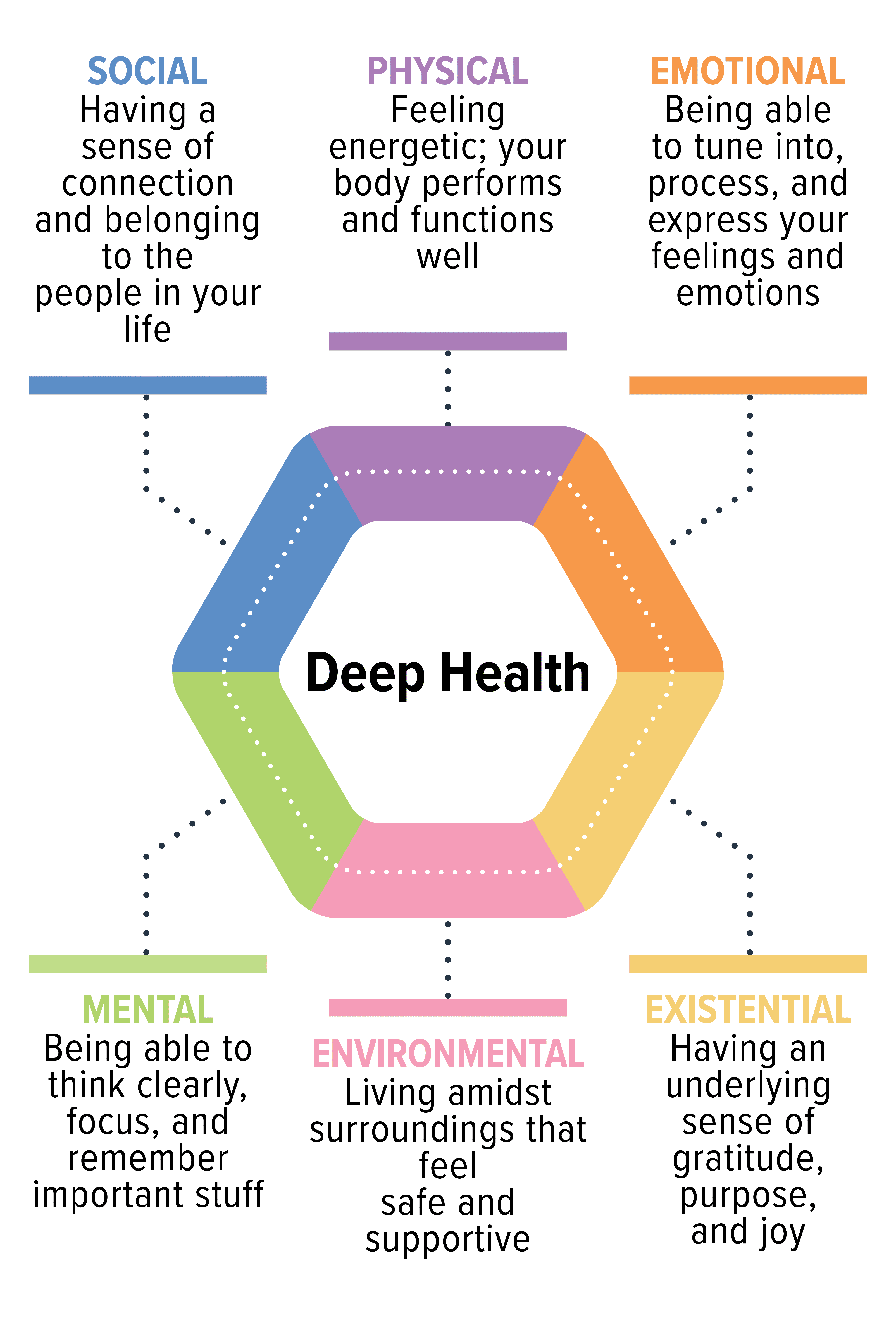
If this is all looking pretty abstract, stick with us. We’ll show you how it works with some practical examples.
The best part: Once you see it, you can’t unsee it.
And that can be life-changing.
(In fact, it’s designed to be life-changing.)
What makes Deep Health special?
Deep Health isn’t just something you want to achieve.
It’s also a lens you can look through to see where you’re at. (Thus, our Deep Health Assessment above.)
Think of it this way: If you’re only looking at one dimension of your health—such as the physical—you’re assessing your health through a very narrow lens.
But, if you’re looking at all six dimensions, you’re assessing your health through a much broader lens—some call this a “holistic” view—which gives you greater insights into your health.
Additionally, understanding Deep Health can help you better determine what actions will make the most positive impact on your life.
When considering a new habit, people often think about how it’ll affect their physical health—but not necessarily how it might impact their social, emotional, or other dimensions of health.
When you know about Deep Health, you can use your insights to help you choose actions that have widespread positive effects—not just on physical health, but other dimensions of health too.
Bonus: When an action benefits multiple dimensions, you’re more likely to sustain it.
How Deep Health works
We all know: Physical health is super important.
To optimize that dimension of your health, you need good nutrition, regular exercise, and quality sleep.
Hardly anyone would argue with that. (We’d say “no one,” but have you ever been on Twitter?)
The problem: You aren’t a robot that’s programmed to do each of those perfectly.
In fact, your ability to eat, move, and sleep well—especially in a way that’s sustainable—depends on the other five dimensions of Deep Health.
How does it work in everyday life?
Let’s map it out, using sleep as an example.
Imagine you’re struggling to get a good night’s rest.
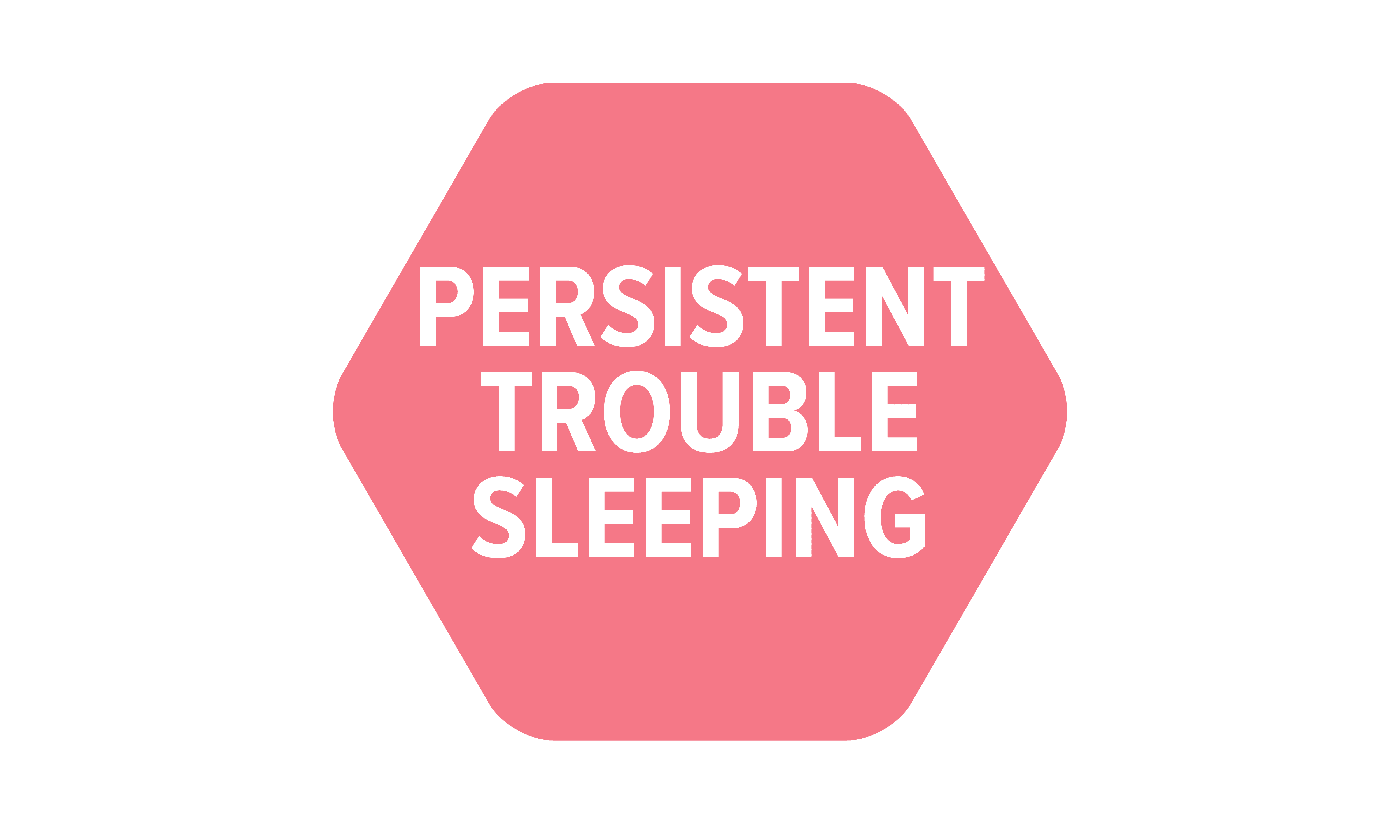
To examine this problem through a Deep Health lens, you’d not only consider how your sleep problem affects your physical health, but also how it impacts your emotional, environmental, mental, social, and existential health.
To illustrate this, the map below shows the EFFECTS poor shuteye might have on each dimension of Deep Health.
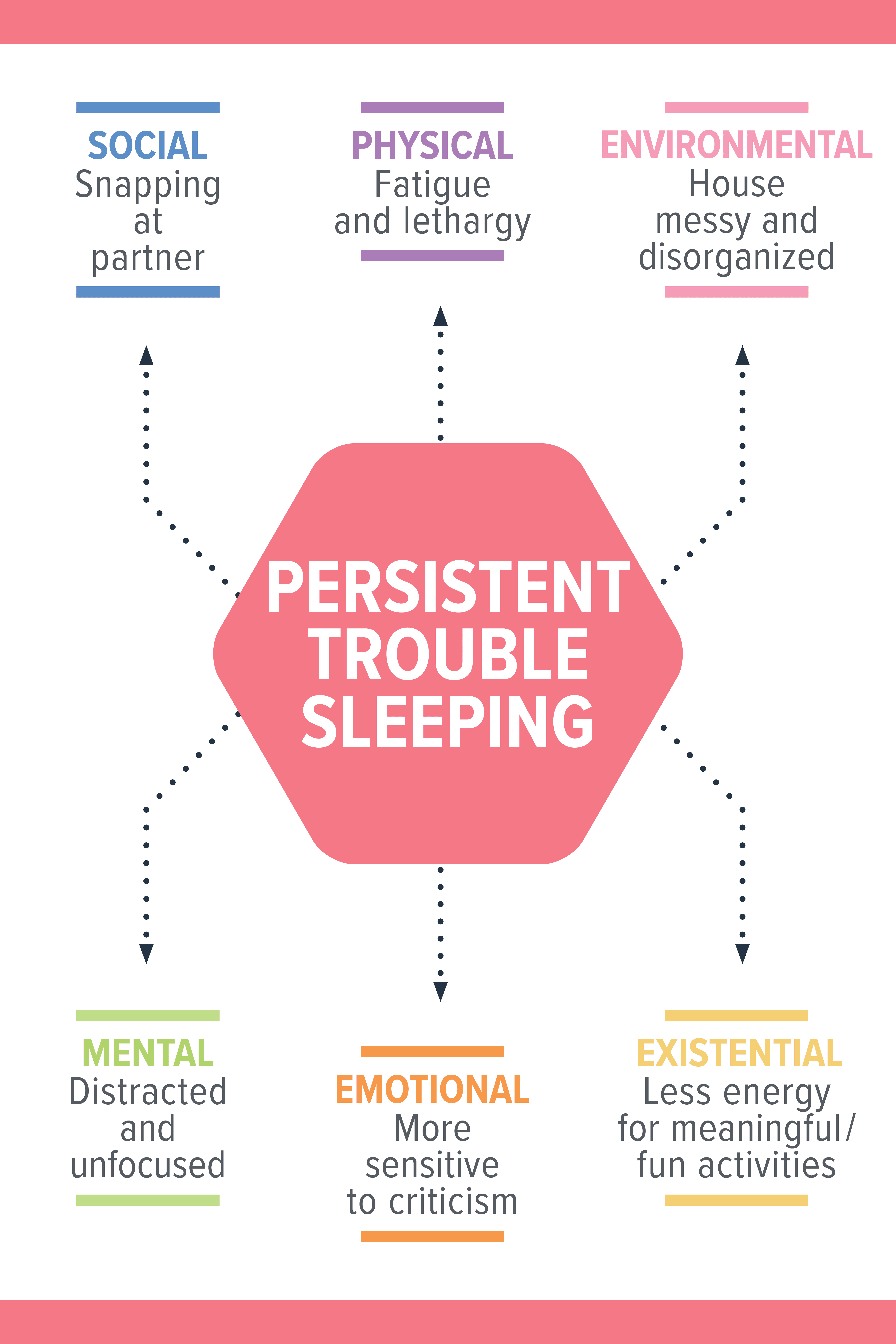
But we’re not done yet.
Now look at your dimensions of Deep Health and consider how each might be CONTRIBUTING to your disrupted sleep.
For example, if you’re not getting along with your partner, that might be causing some tension in your relationship—and it’s hard to fall asleep next to someone when you’re worrying, ‘Are they mad at me?’
As a result, your social health is messing with your shuteye.
You could apply this thinking across all six dimensions of Deep Health.
(Which we did. See the updated map.)
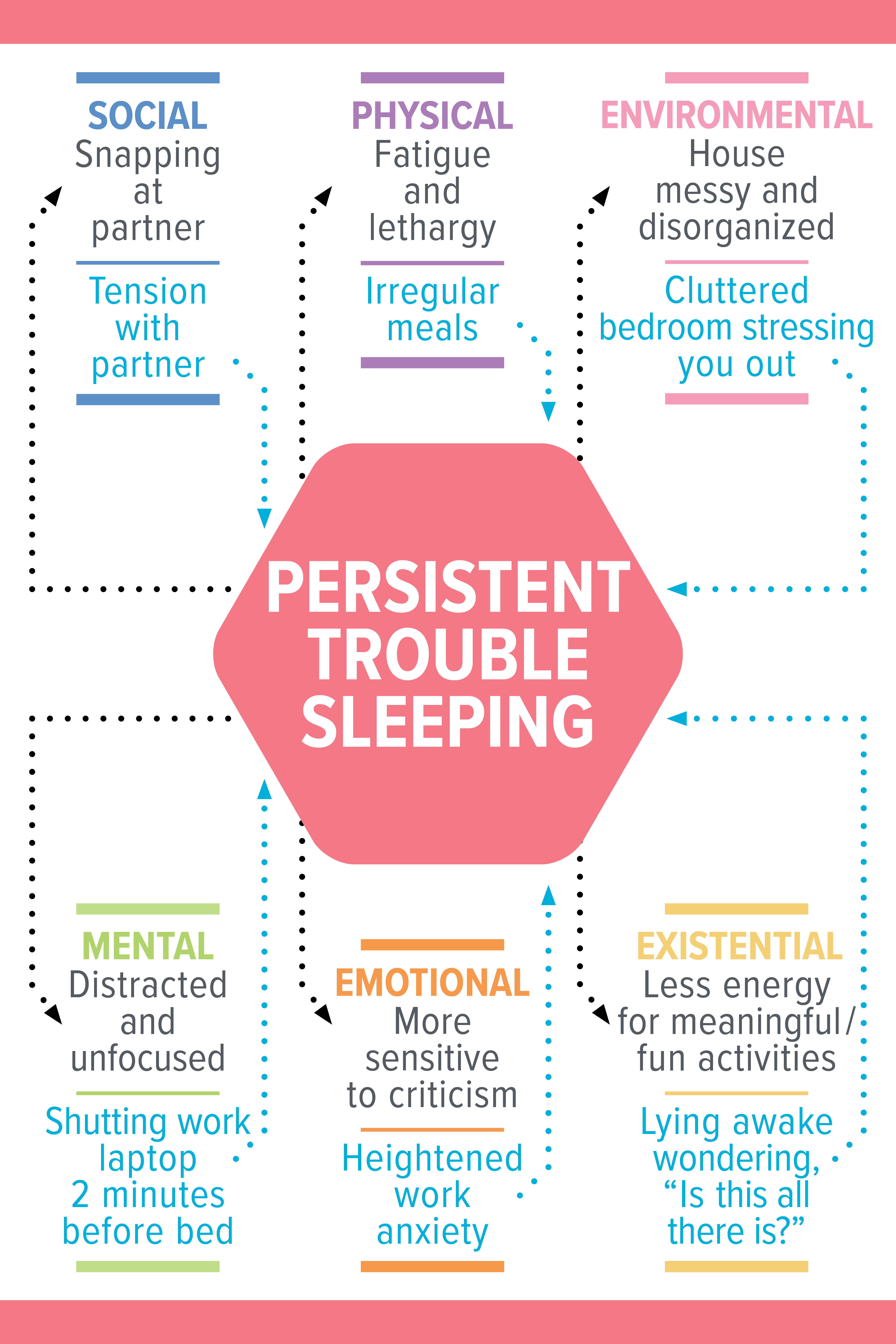
Finally, look for relationships BETWEEN the dimensions of Deep Health. After all, these dimensions don’t exist in a vacuum; they all affect and influence each other.
For example, in the updated map…
- Poor sleep is causing heightened work anxiety. The heightened work anxiety is causing late-night laptop work, which is then causing more poor sleep.
- Late meals are also playing a role in the energy struggles.
- The snapping at the partner is also a reason why the house is messy (because that person is feeling underappreciated and unwilling to clean).
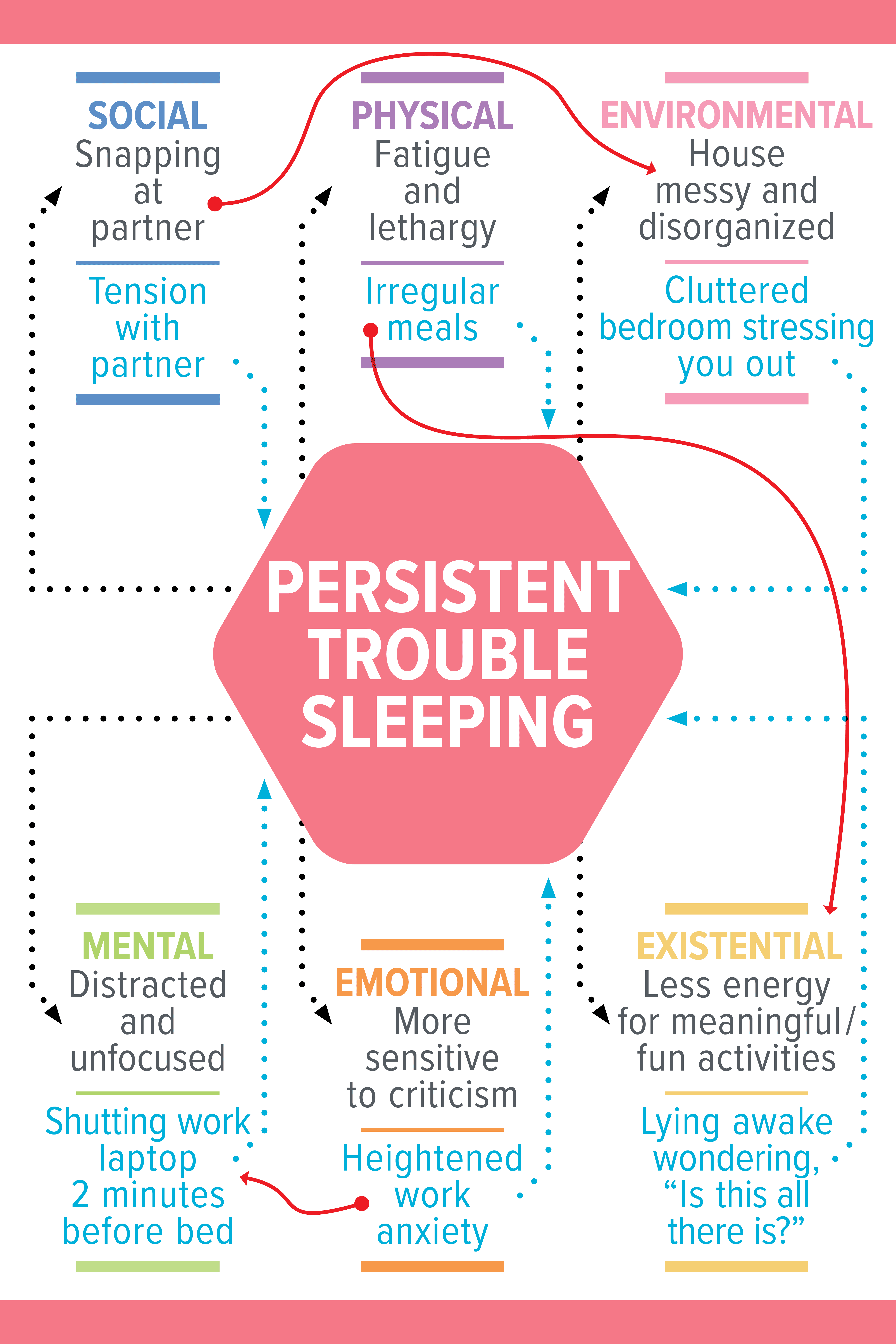
As you can see…
The map can get pretty messy.
That’s okay.
It means there’s a lot of opportunity for improvement. But it might be that the easiest (and best) place to start, isn’t where you thought.
For instance, maybe the best route to getting a better night’s sleep begins with getting more organized at work and setting up some work/life boundaries, rather than trying to address sleep directly.
Understanding the way various aspects of life work together to create your complex human experience is where the real insights begin.
But let’s not leave you with this rather hopeless-looking mess.
You just saw how various aspects of health were affected by ONE issue (poor sleep).
Let’s see how various aspects of health can be affected by ONE solution.
The exponential power of a positive action
Sleep can be a tricky thing.
In most cases, it’s not like you can snap your fingers and just decide to sleep better.
But let’s use the insights we gained from our Deep Health mapping above, and see how we might positively impact sleep.
Work anxiety and poor boundaries around working hours might be making it hard to “turn off” and get quality sleep at night.
So, say you start with a simple intervention: Setting some boundaries around your evening. No work emails after 6:30 p.m., and nothing but chill activities (like reading or watching a light-hearted show) after 9 p.m.
Because you understand Deep Health, you also hypothesize that this new routine will benefit not just sleep (your physical health) but may also improve other dimensions of health.
For example, not working evenings means you might spend more quality time with your spouse—bumping up social health—or even get a chance to do some light tidying up before bed—bumping up environmental health.
And hey! After a couple weeks, this gradual wind-down ritual does start helping you fall asleep sooner and get better quality sleep overall.
Your sleep may not be perfect, but darn it, it’s better than it was before.
Let’s map what happens.
Okay, so the center is now a positive trait, thanks to your new evening routine.

And, as mentioned, you’re sleeping better.
Now, let’s look at the EFFECTS of this improvement on each dimension of Deep Health.
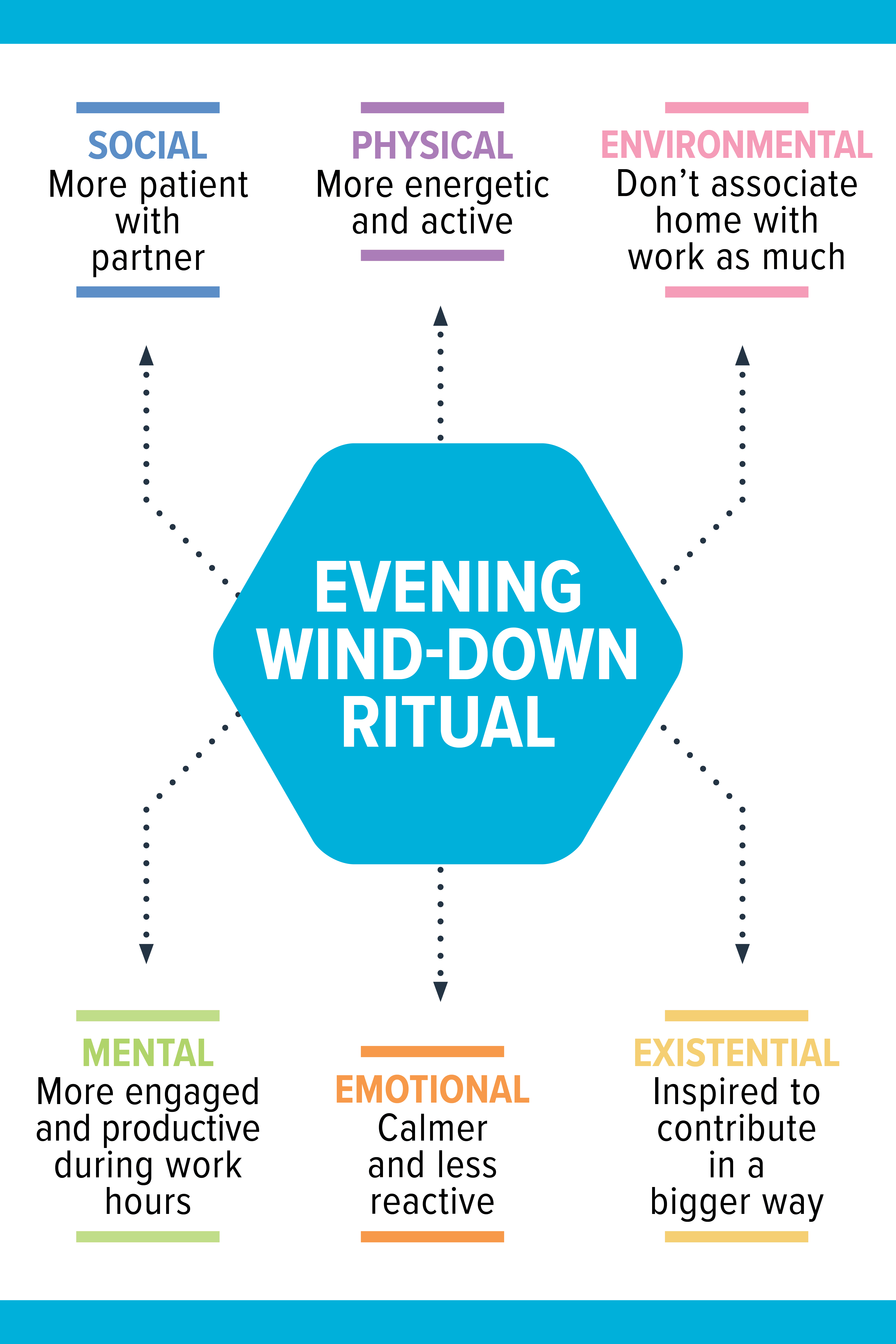
Next, ask yourself what factors might be CONTRIBUTING to the improvement.
What might be helping you—from each dimension of Deep Health—to maintain your bedtime routine and sleep better?
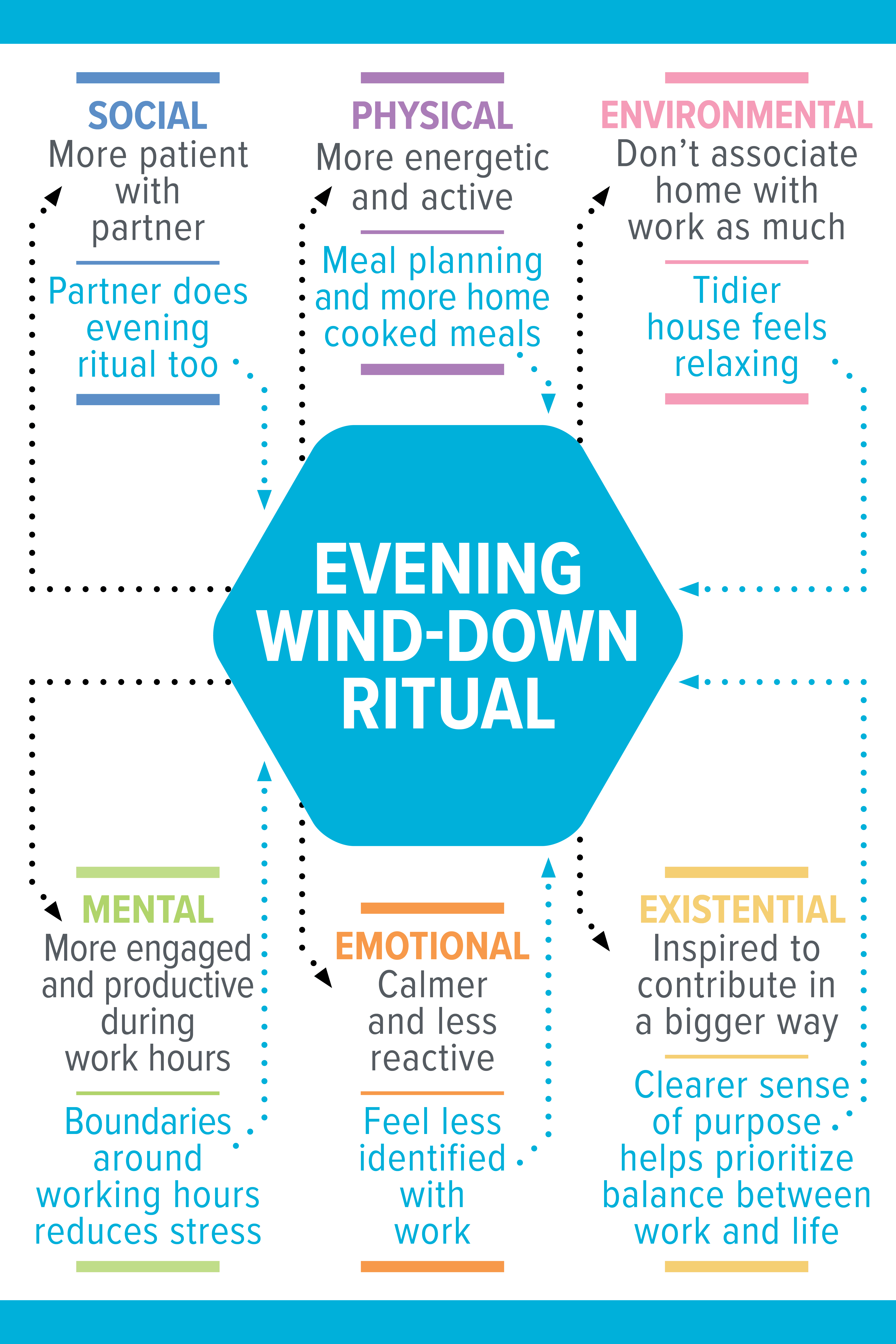
Lastly, look for relationships BETWEEN the elements on your map.
In this hypothetical well-rested person…
- Better sleep is causing better focus and productivity during standard work hours. This frees up time outside of work, which helps you build up other aspects of your identity, and feel less defined by work.
- Meal planning and more regular healthy, home-cooked meals are also helping daytime mood balance. (Because, less hanger.)
- The energy you’ve gained from sleeping better is also helping you think in a bigger way about your life, and how you’d like to contribute to the world or your community in a meaningful way.
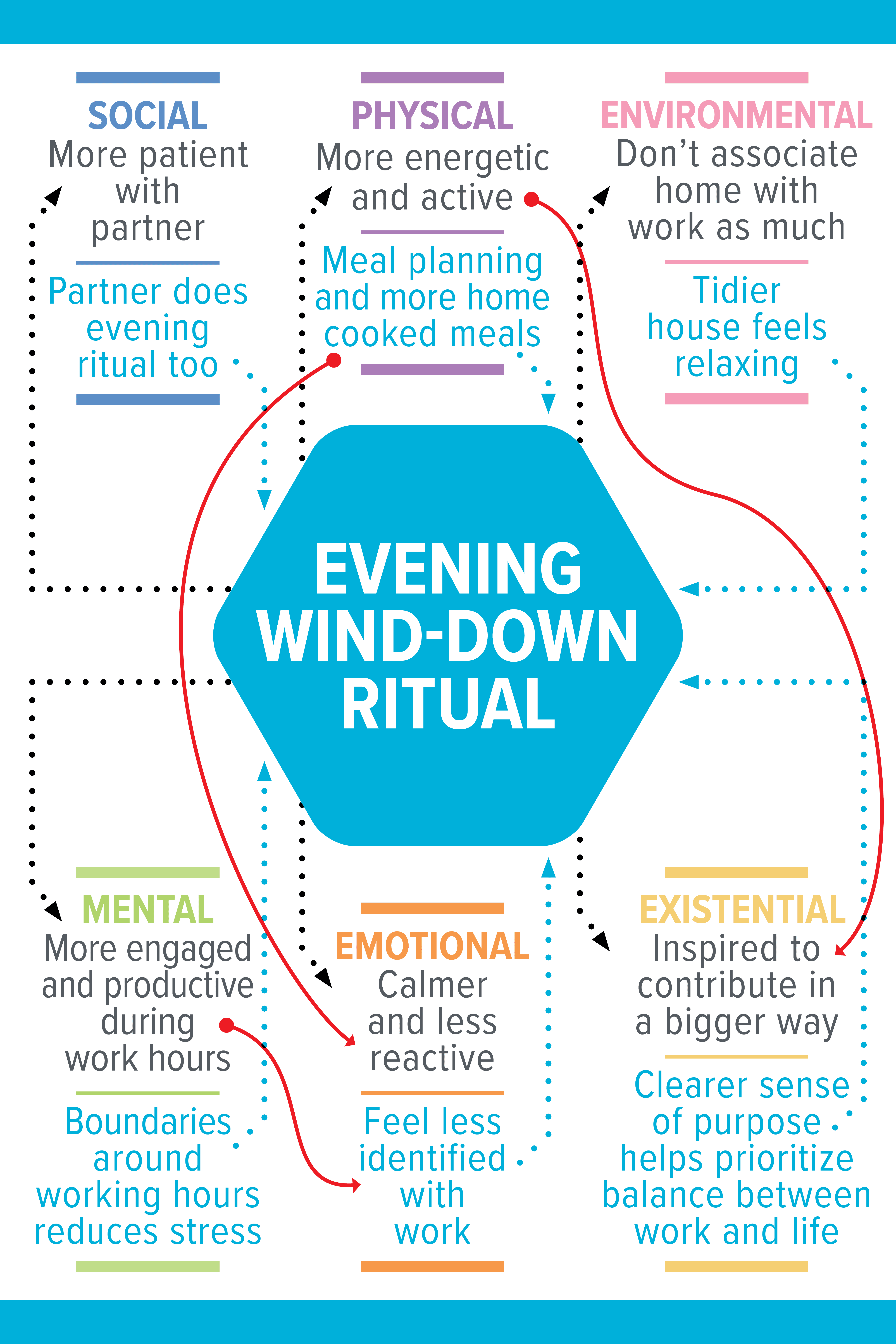
The map might look messy again.
But this time it’s a beautiful mess.
It’s now the map of a complex, yet elegant, harmonious, thriving life.
All the dimensions work together, building positive momentum and providing scaffolding for even more improvements.
Your health isn’t dependent on ONE single aspect, such as your physical health.
Therefore, improving your health shouldn’t be confined to working on ONE dimension—say, your body.
In reality, health is supported by a network of intersecting, interdependent factors.
And when that network is strong and working together, it creates a state of health that is richer, deeper, and more resilient than anything you’ve ever experienced.
If you haven’t already, try out your Deep Health Assessment below, and start building YOUR optimal health and well-being.
References
Click here to view the information sources referenced in this article.
If you’re a coach, or you want to be…
You can help people build nutrition and lifestyle habits that improve their physical and mental health, bolster their immunity, help them better manage stress, and get sustainable results. We’ll show you how.
If you’d like to learn more, consider the PN Level 1 Nutrition Coaching Certification.



